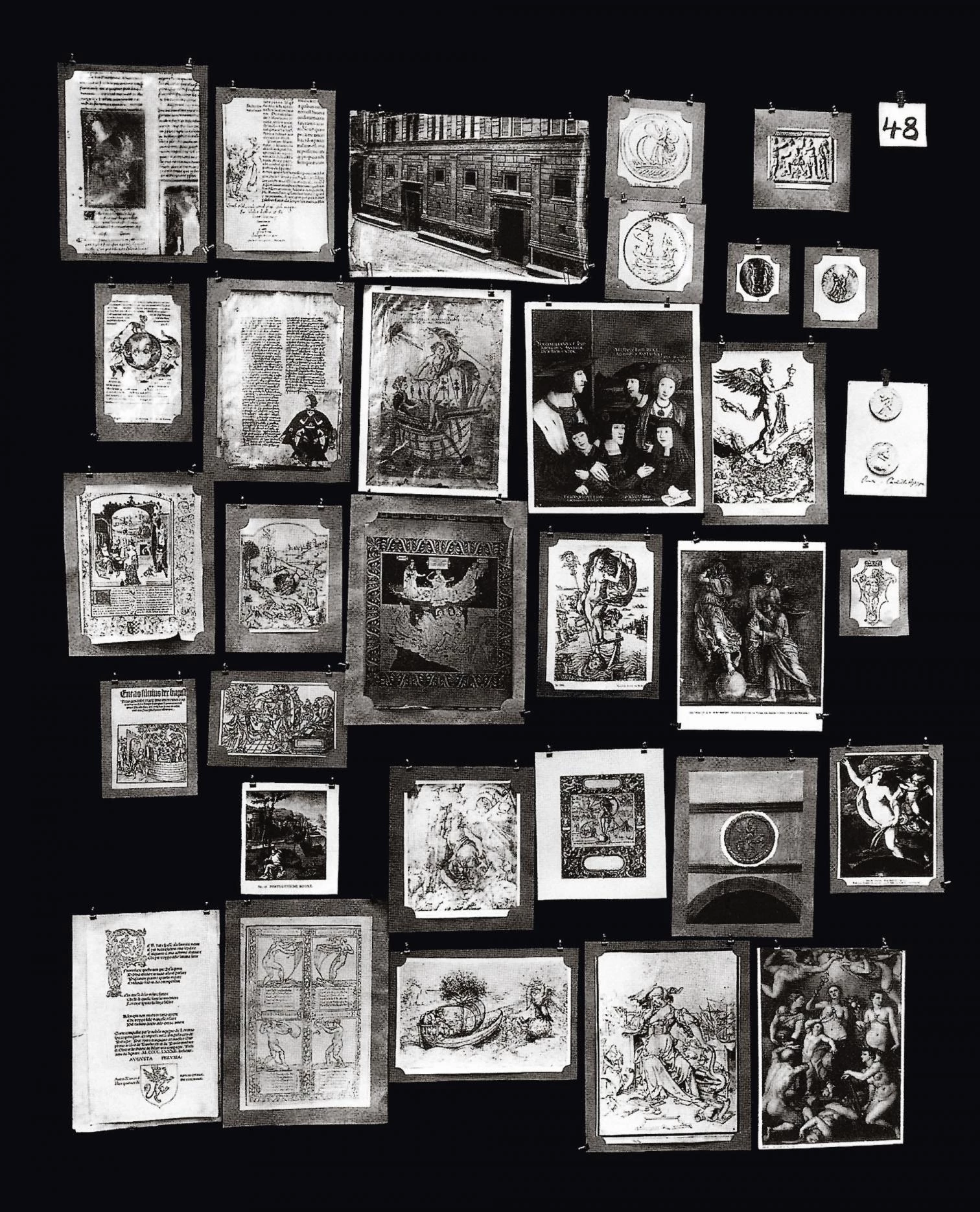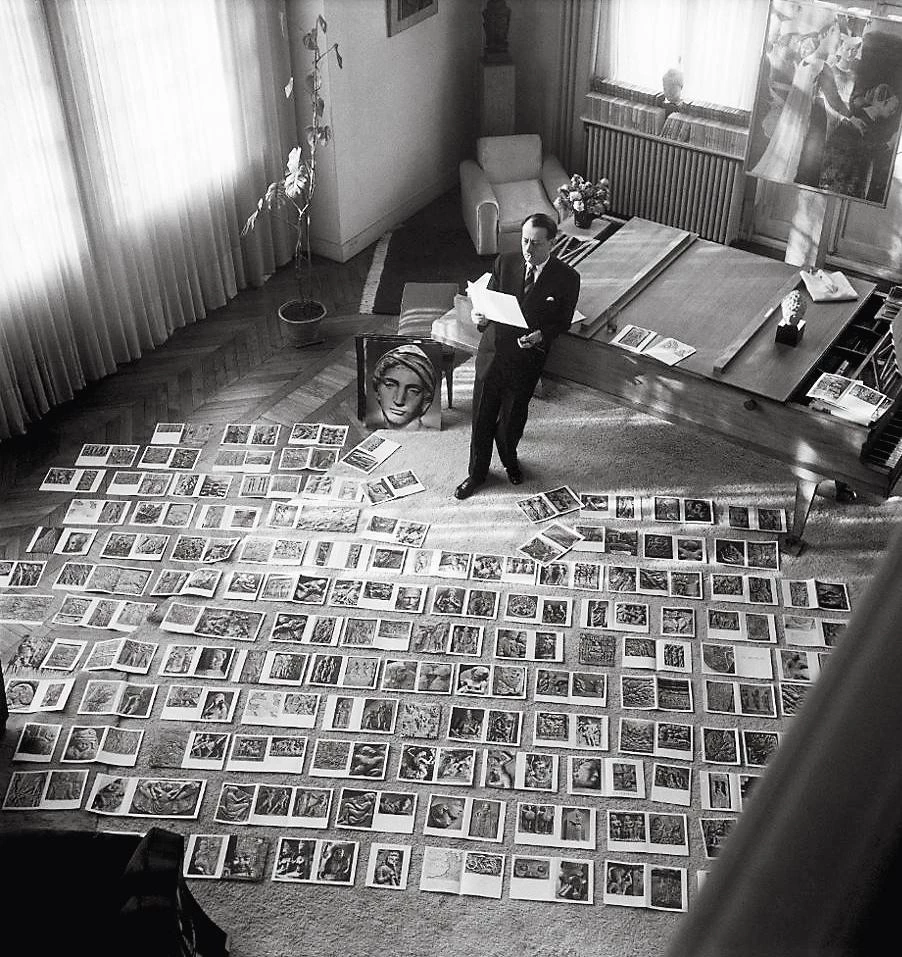
Aby Warburg, Bilderatlas Mnemosyne, plancha 48, octubre 1929 © The Warburg Institute, 2020
In the beginning was the image. Contradicting the first verse in the Gospel of John –‘In the beginning was the Word’–, the protagonism of the visual takes the lead in the study of the most distant past, and also in contemporary communication. Architecture, as a synthetic discipline, has privileged the inclusive capacity of the eye over the analytical narrative of the ear, and in the schematic division of the brain’s hemispheres – the right side that controls the visual and the left one associated to the verbal – it has gone for the former: as older architects used to say, ‘the word was never the architect’s preferred means of expression.’ Perhaps the priority given to the image makes us less capable of elaborating the ‘stories’ that rule decision-making today – although a few architects are associated to efficient mottoes, from ‘the less is more’ of Mies to the ‘machine à habiter’ of Le Corbusier –, but sight is a formidable tool to deal with complexity.
The integration of knowledge from very different areas, the reconciliation of opposite functional demands, and the harmonization of inevitably divergent interests benefit more from a panoramic view than from a linear approach: for architects, the clinical eye is more useful than verbal analysis, because the classical equivalence between image and word is most likely fictitious. We admire figures like Aby Warburg and André Malraux who used images to develop theories or histories, and already Horatio coined an expression that has reached our days after fertilizing centuries of aesthetic thought: ‘ut pictura poesis,’ poetry as painting. The capacity of the image to build detailed narratives or of the narrative to convey precise images is however very limited, and the idea of the art critic Eugeni d’Ors of joining both areas through a figurative philosophy that uses drawing as a hinge is indeed imaginative, but also unconvincing.
If visual thought is more pervasive in architecture than in other disciplines, perhaps it also emerges with varying intensity in different cultural contexts. Spain, which can take pride on Velázquez, Goya, or Picasso, has not produced figures of such relevance in the field of verbal thought. While it is impossible to write a history of art without Velázquez’s reflexive painting, Goya’s tragic chronicles, or Picasso’s cubist revolution, it is however perfectly possible (see the latest synthesis by A. C. Grayling) to publish a history of philosophy with no peninsular names other than Seneca, Averroes, and Maimonides: a Hispano-Roman, an Andalusian Arab, and a Sephardi Jew, who were all born in Córdoba but ended their days in Rome, Marrakech, and Cairo. If we want to prevent ‘Spanish thought’ from being an oxymoron, perhaps we must incorporate its visual dimension, because as all of us architects know, in the beginning was not the word but the image.






